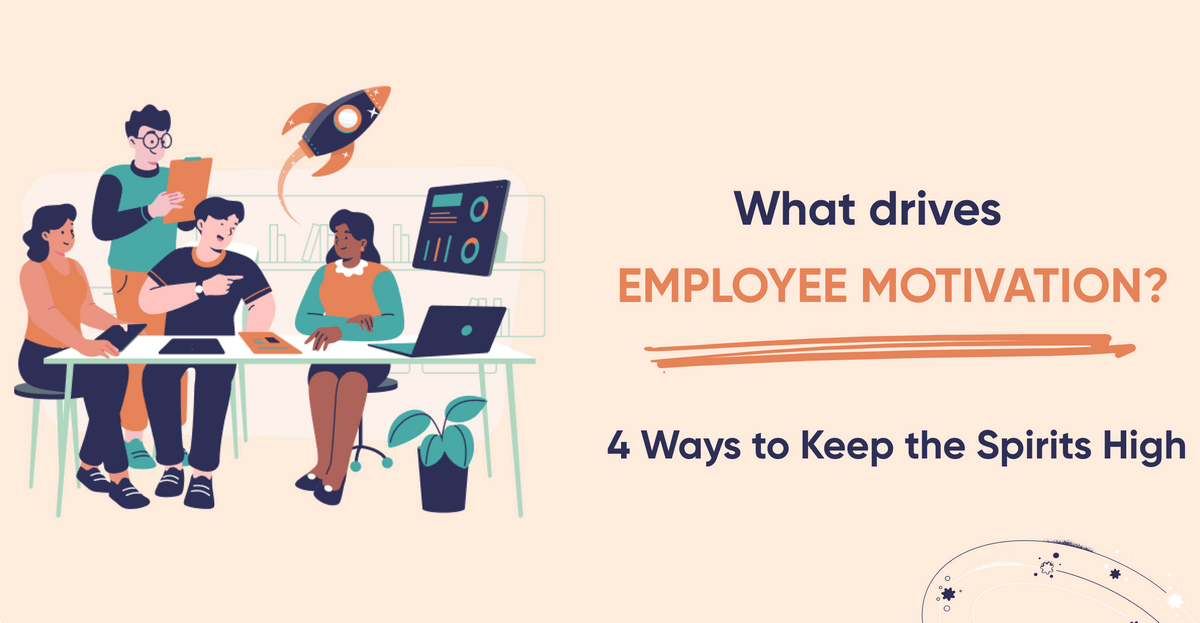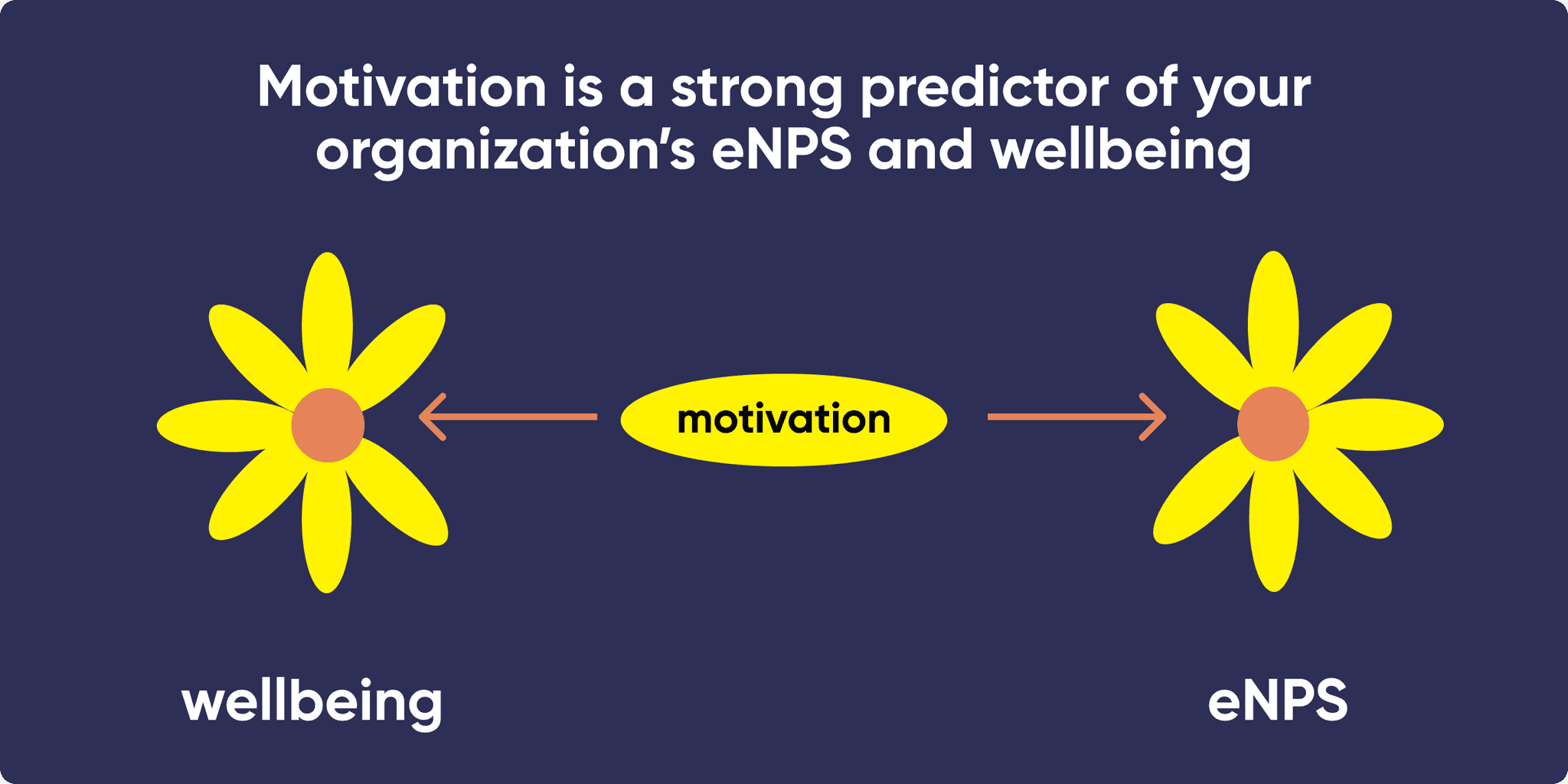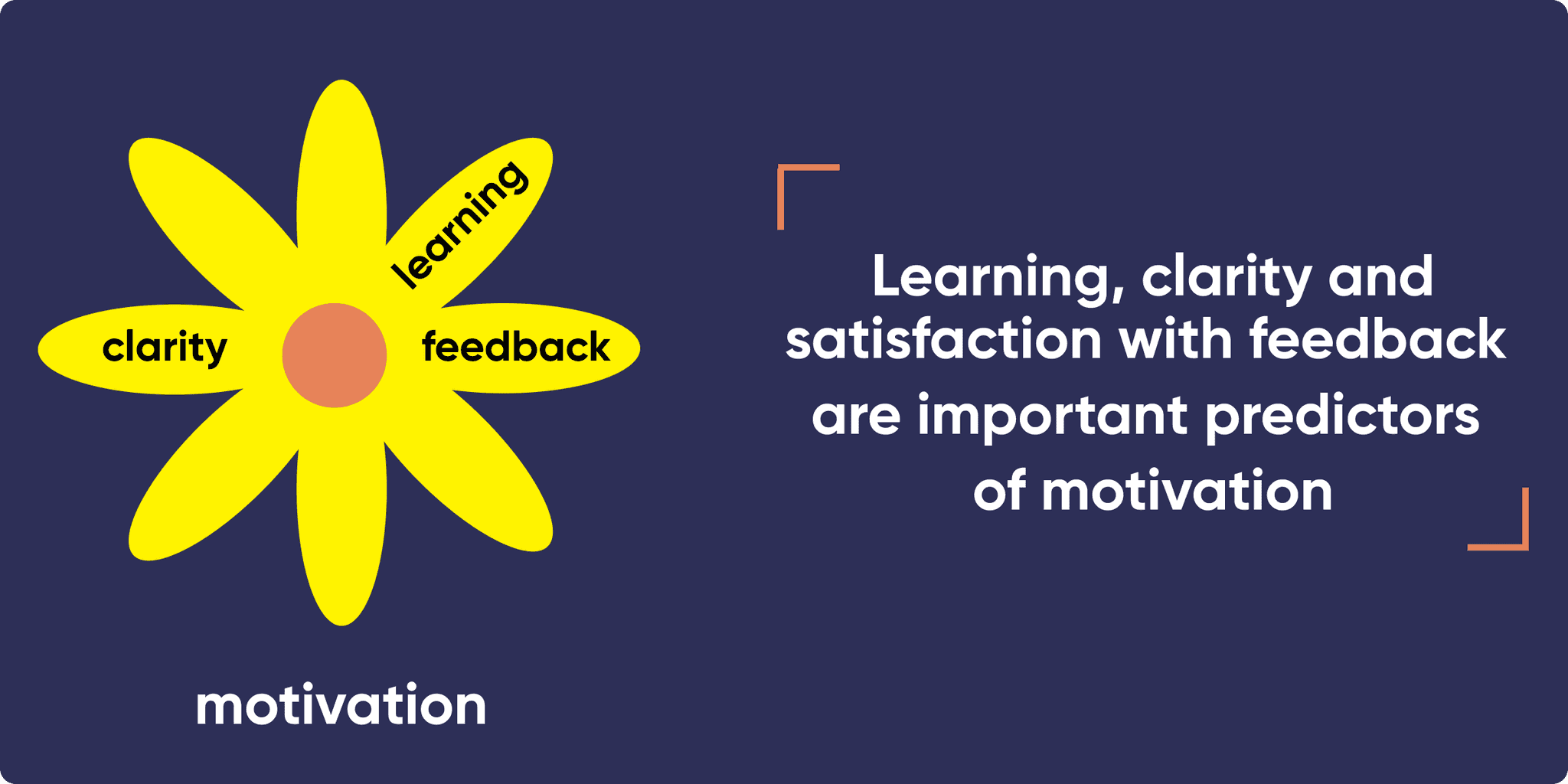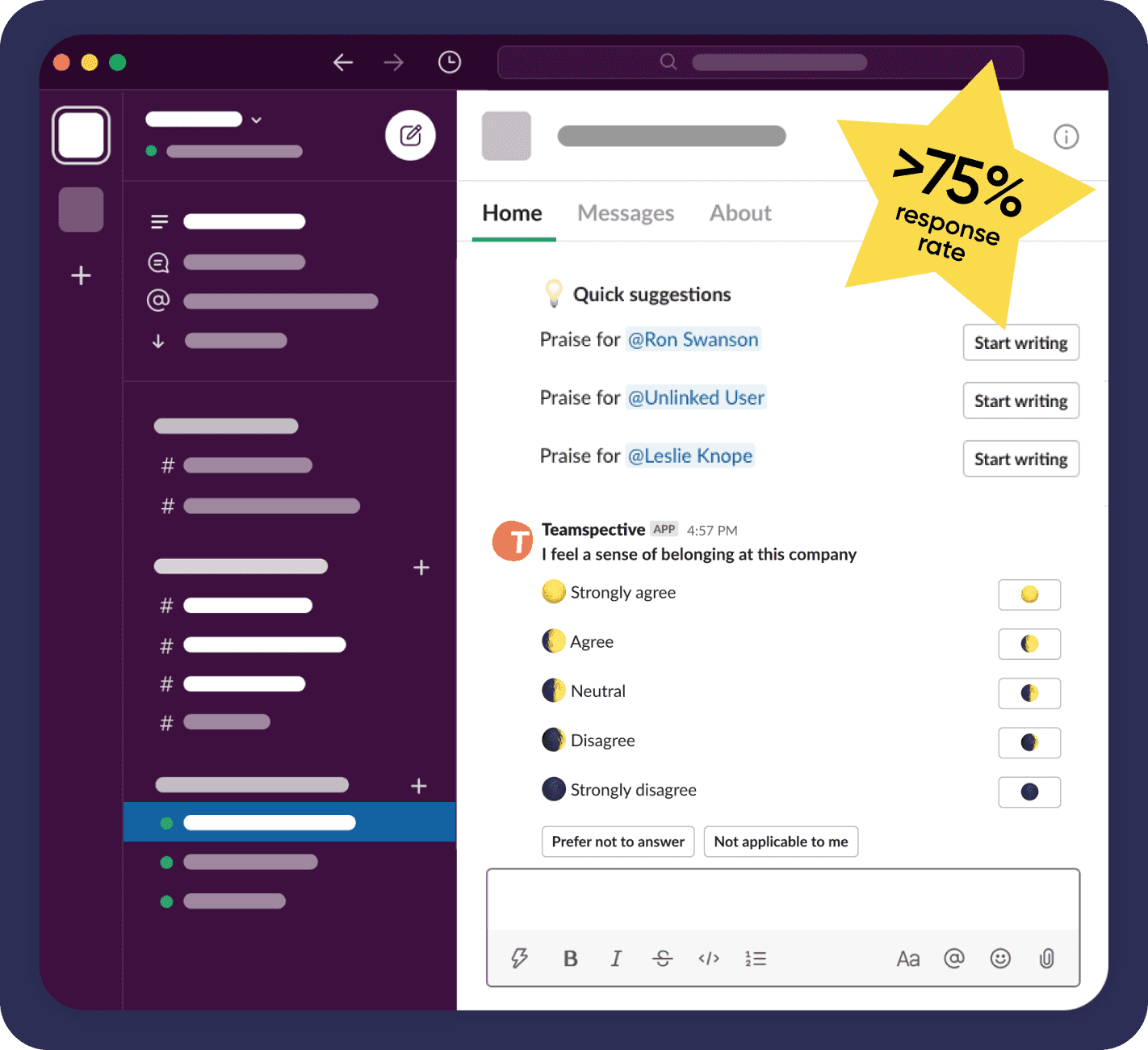Employee motivation is essential for the success of any organization, yet cultivating it consistently remains challenging. This article explores which key engagement metrics motivation affects and presents practical approaches to boost it effectively.
The real impact of high employee motivation
Employee motivation is a strong predictor of your organization’s eNPS and employee wellbeing.
When employees feel motivated, the benefits extend far beyond productivity. Our research shows that high motivation is a strong predictor of both employee wellbeing and the organization’s eNPS (Emplyee Net Promoter Score). In other words, motivated employees have a better life and are more likely to recommend your organization as a workplace.
Moreover, high motivation can untap completely new levels of productivity and innovation. On the other hand, low motivation reduces engagement and productivity as well as increases churn.
What actually drives employee motivation?
Our studies reveal three critical factors that predict changes in employee motivation:
- Continuous learning opportunities
- Clarity of goals
- Satisfaction with feedback received
These 3 drivers alone predict 50% of changes in employee motivation:
To ensure that your people are well-motivated, it is important to track employees' sentiments regarding these topics and address any issues promptly.
Four practical approach to improve employee motivation
Now that we know what drives high motivation, let’s have a look at some more concrete tips to improve the clarity of goals as well as satisfaction with feedback and the rate of learning.
Tip 1: Establish a strong feedback culture
Feedback and recognition significantly influence employee motivation. Regular, high-quality feedback can help employees to feel valued, engaged, and invested in their work, while also providing valuable insights and guidance on how to improve their performance. This applies to both recognition in the form of praise and reinforcing feedback as well as constructive, redirecting feedback.
Our insights show that receiving written feedback monthly leads to a 20% increase in motivation at work. Written feedback also stimulates and lowers the threshold for fruitful in-person feedback discussions. However, despite its importance, feedback seldom receives the attention it deserves. (Read more about The Feedback Shortfall).
Action step: Encourage employees to share feedback with closest coworkers once every 1-2 months**.** Leading by example is one way managers can nurture a culture of openness, proactive communication, and continuous growth. However, often this is not enough to establish strong routines around personal feedback nor overcome people’s natural shyness to bring up difficult topics.
Teamspective has built an engagement tool specifically to help companies nurture a thriving feedback culture as well as to streamline and automate feedback processes:
- Feedback can be requested and shared directly in Slack or MS Teams.
- AI feedback activation ensures that everyone receives quality feedback regularly (once every 1-2 months as per our recommendation above).
- Our in-app guidance helps employees continuously develop their feedback skills.
- All feedback is easily searchable by themes, making it easy to track one’s own development and share the relevant insights for e.g. development discussions.
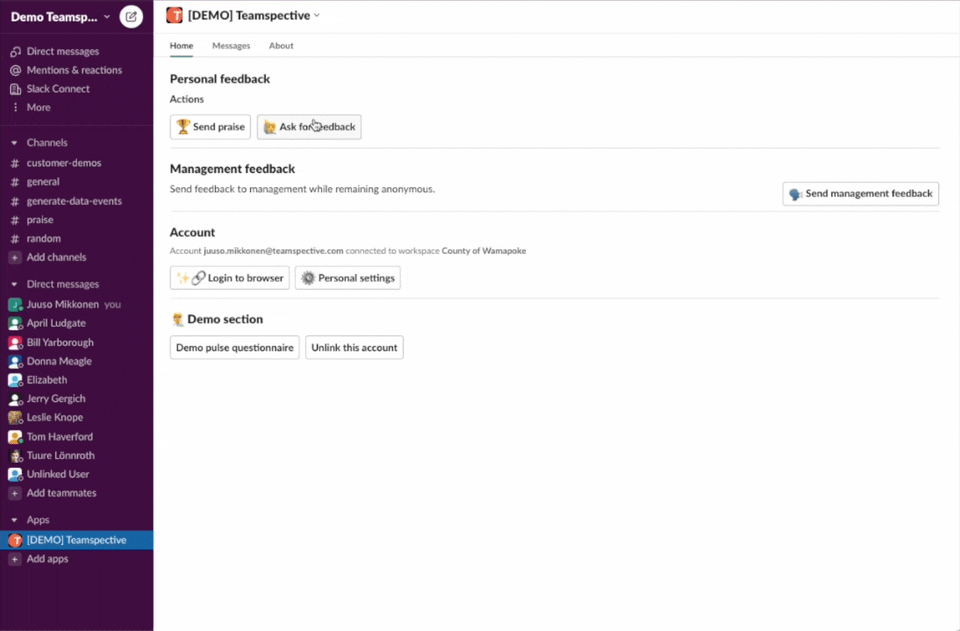
Asking for feedback + sharing feedback through Teamspective Slack app
Tip 2: Create continuous learning and growth opportunities
Learning and development opportunities in the workplace can have a significant impact on employee motivation and engagement. While it may seem that experience leads to increased efficiency, in reality, stagnation and boredom can set in when employees are not challenged or given opportunities to grow.
Action step: Make sure that your leaders understand the importance of regular discussions with employees about their plans and ambitions for personal growth and professional development. These insights should inform each employee’s role definitions and goal setting whenever possible. Development discussions or even 1-1 calls can be a good place to ensure that team leads understand properly where their employees would like to grow.
Teamspective’s Feedback & 360 Evaluations solution lowers the threshold for employees to talk about their needs. Written feedback can help employees articulate their ambitions clearer as well as act as a conversation starter.
Tip 3: Regularly measure topics that affect motivation
Employees don’t always talk openly about what bothers them – least of all the ones low on motivation. Additionally, low psychological safety can raise the threshold to bring up issues.
Hence, in order to understand how your employees overall feel about their jobs, the rate of learning, the clarity of their goals, and the feedback they are getting, they need to have an anonymous way to share their thoughts and feelings. Make sure that it is so easy and interactive that there is no excuse to skip responding.
Action step: Implement anonymous pulse surveys for deeper insights into employee sentiment around learning opportunities, goal clarity, and feedback quality. Make the process simple and interactive to maximize participation.
Anonymous pulse surveys are an effective way to gain deeper insights into the actual situation and potential issues that may be affecting motivation and overall employee wellbeing.
Teamspective’s Pulse Surveys can be answered directly in Slack or MS Teams, without any need to click any website links or log in separately. Answering 5-6 questions takes just 30 seconds. It doesn’t get much faster or easier than that. In a few weeks, the surveys become a pleasurable and rewarding routine. (More on the rewards next.) Learn more on the Solutions page.
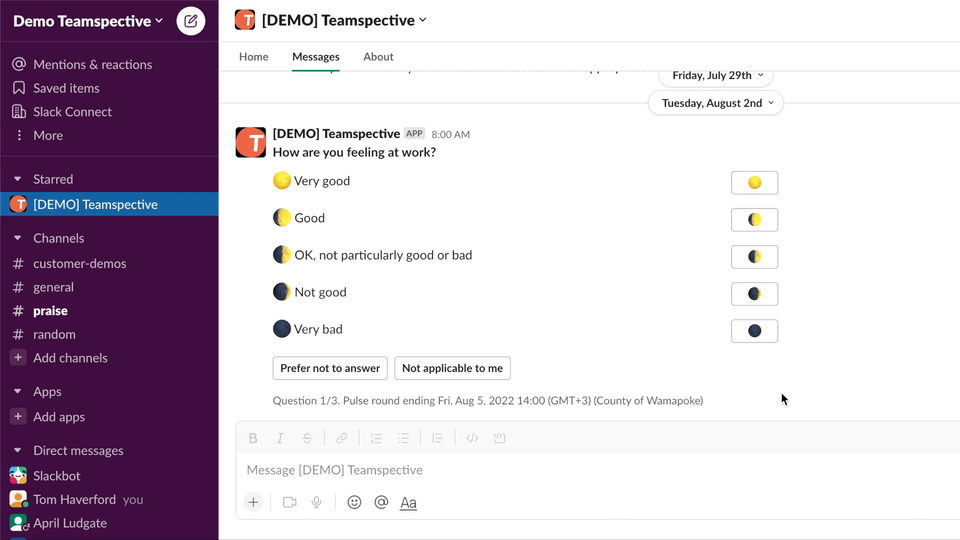
Answering a Teamspective Pulse survey directly in Slack and adding a question-specific comment (always optional).
Smart question rotation ensures that a broad range of employee engagement topics are covered on a regular basis – including many aspects of motivation, learning, feedback, and goals. These varying surveys allow tracking trends also for more nuanced metrics. (Learn here why this approach is superior to combining more simplistic pulse surveys with heavy annual or bi-annual HR surveys.)
Tip 4: Empower teams to address identified issues
Collecting insights through pulse surveys is just the first step. It's equally important to take action based on the feedback received.
Action step: Rather than relying solely on top-down solutions from HR or management, empower teams to address their unique challenges. Resilient organizations enable teams to take ownership of improvement areas.
If you are using Teamspective’s Pulse Surveys, you also benefit from having automated reports for each team and actionable suggestions & guidance on the focus areas. Our in-app tips and playbooks make it easy for leaders to take action towards both big and small improvements and propose frameworks for hosting theme-specific discussions and workshops. Check them out with your free account!
It’s a good practice for teams to look at their own pulse results together in retrospectives or other team meetings monthly or at least once every quarter. The fact that the employees and teams get their own data to work with plus best in-Slack usability leads to exceptionally high response rates seen by Teamspective clients.
Conclusions
Every organization and every employee is unique, and the best ways to motivate your people ultimately depend on their individual ambitions and your company culture. However, it’s hard to know what’s working and what’s not, unless you listen to your employees and collect anonymous wellbeing and engagement data continuously.
Getting started with Teamspective’s Pulse survey solution is an easy way to start collecting these insights. With the help of our experts, you can set up everything within an hour, share an introductory message to your employees and that’s it. Book a demo or a kickoff session directly here.
Depending on the feedback you get from your employees, you might then also want to consider our other tools, for building a stronger feedback culture and organizational resilience.

